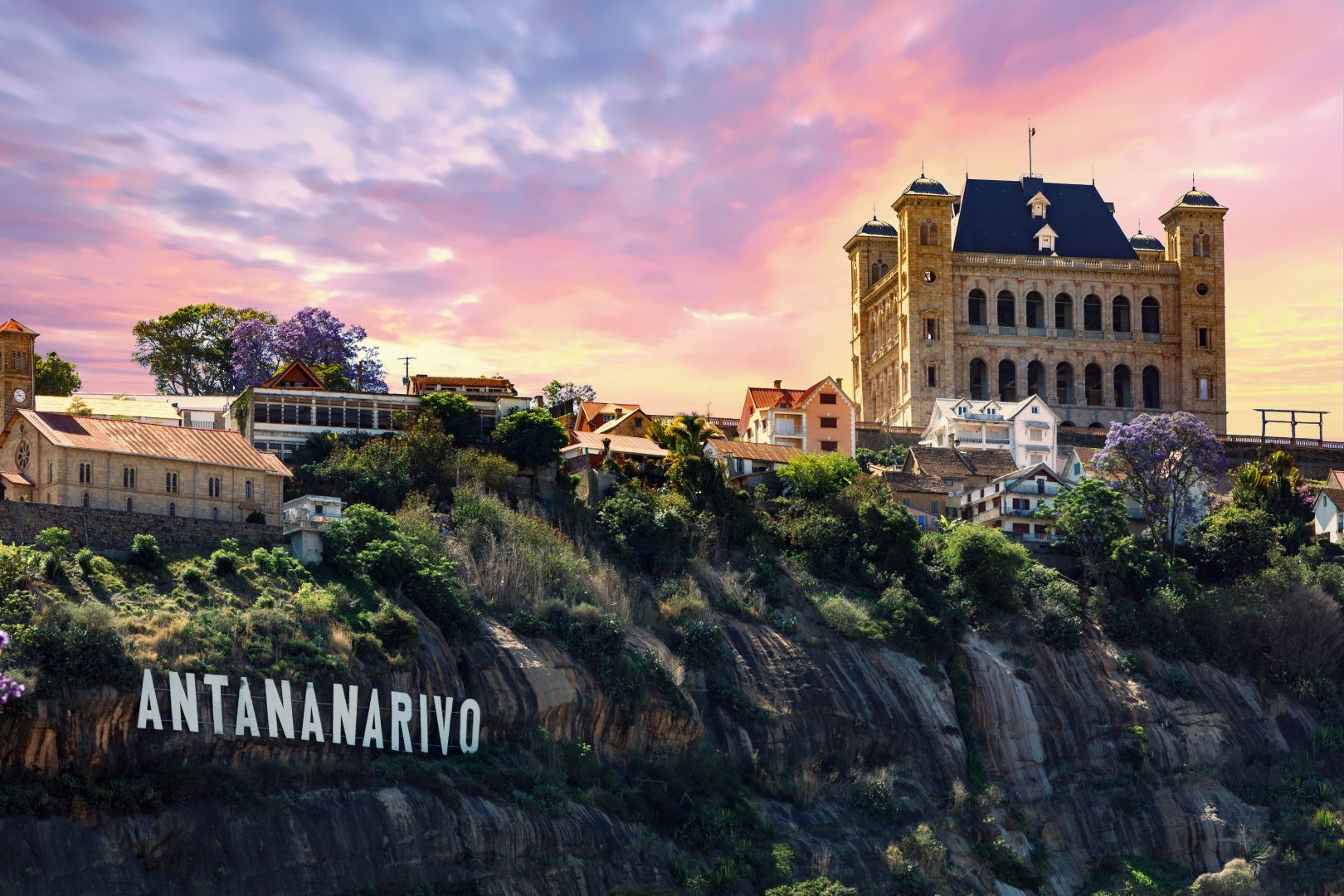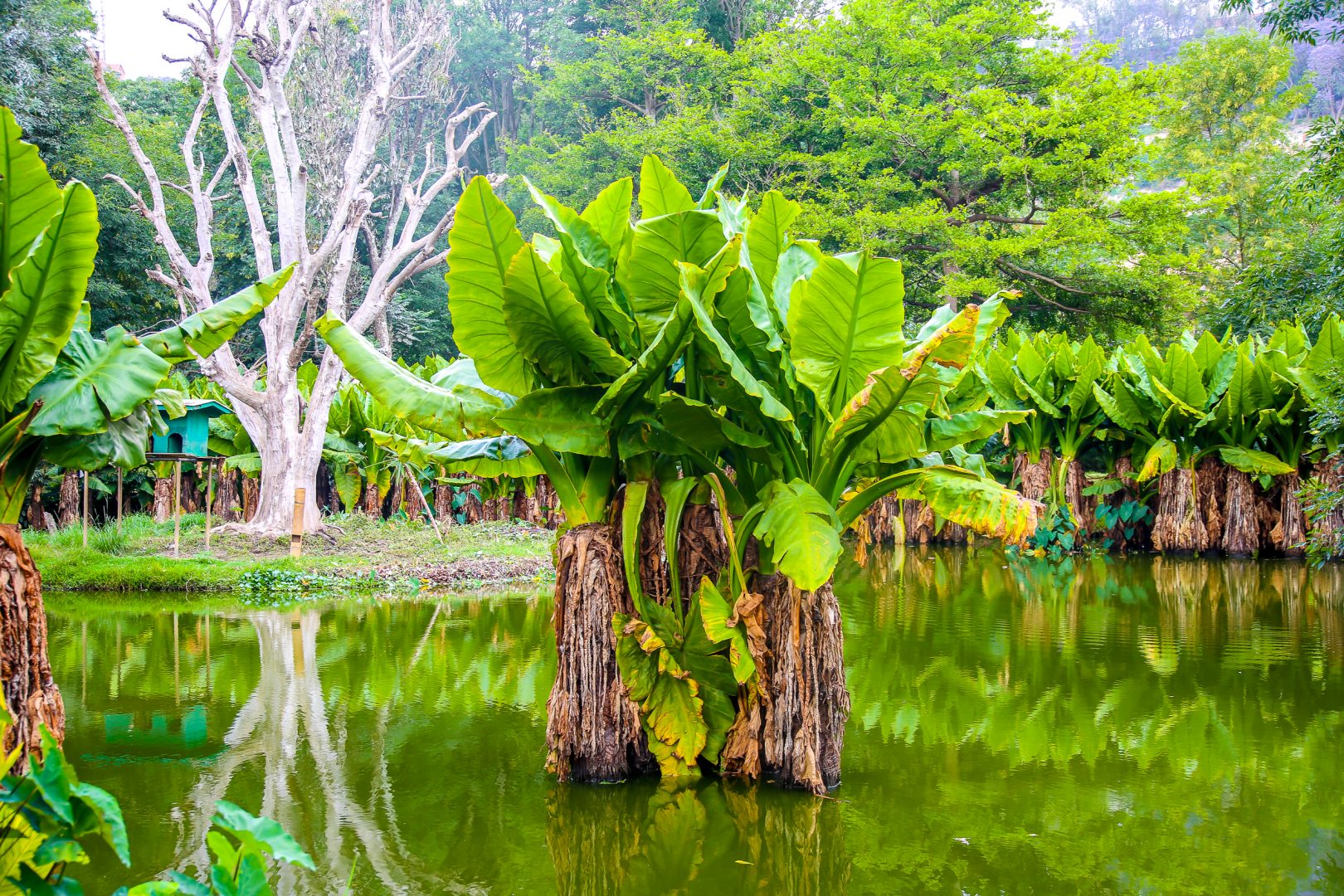Antananarivo is the capital of Madagascar, in the central highlands of the island.
Antananarivo is the capital of Madagascar, in the central highlands of the island. Overlooking the city, Antananarivo’s Rova Palace Complex has been the center of the Merina kingdom since the 17th century. It features wooden houses and royal tombs. The pink baroque Andafiavaratra Palace is located in the nearby Haute Ville district. Downtown, the heart-shaped lake Anosy is ringed from jacaranda trees.
1. Ambohimanga

Ambohimanga is a hill and traditional fortified royal settlement in Madagascar, located approximately 24 kilometers northeast of the capital city of Antananarivo. The hill and the rova that stands on top are considered the most significant symbol of the cultural identity of the Merina people and the most important and best-preserved monument of the precolonial Merina Kingdom. The walled historic village includes residences and burial sites of several key monarchs. The site, one of the twelve sacred hills of Imerina, is associated with strong feelings of national identity and has maintained its spiritual and sacred character both in ritual practice and the popular imagination for at least four hundred years.
2. Andafiavaratra Palace

The Andafiavaratra Palace, located on the highest hilltop of the capital city of Antananarivo, was the residence of Prime Minister Rainilaiarivony of Madagascar, who governed the island kingdom in the late 19th century. The building currently serves as a museum and the estimated 1,466 objects of historical importance to the Kingdom of Madagascar that was rescued from the 1995 fire at the Rova of Antananarivo are housed here.
3. Queen’s Palace

The Rovā of Antananarivo is a royal palace complex in Madagascar that served as the home of the sovereigns of the Kingdom of Imerina in the 17th and 18th centuries, as well as of the rulers of the Kingdom of Madagascar in the 19th century. Its counterpart is the nearby fortified village of Ambohimanga, which served as the spiritual seat of the kingdom in contrast to the political significance of the Rova in the capital. Located in the central highland city of Antananarivo, the Rova occupies the highest point on Analamanga, formerly the highest of Antananarivo’s many hills.
4. Botanical and Zoological Garden of Tsimbazaza

The Botanical and Zoological Garden of Tsimbazaza, short Tsimbazaza Zoo is a zoological and botanical garden in the neighborhood of Tsimbazaza in Antananarivo, Madagascar, located just north of the National Assembly of Madagascar building. It is said to house “the finest collection of Malagasy wildlife”, with several unique species on display. The zoo has a museum with collections of tribal carvings and the skeleton of extinct megavertebrates, including an elephant bird, pygmy hippos, and giant lemurs. It also contains Madagascar’s largest herbarium with roughly 80,000 plant specimens. In November 1989, the WWF celebrated its tenth year in Madagascar by opening an environmental teaching center at the zoo.
5. Lake Anosy

Lake Anosy is an artificial lake in the southern part of the capital city of Madagascar, Antananarivo, about two miles south of Haute-Ville. Ampefiloha is located to the west of the lake, Isoraka to the northwest and Mahamasina to the north. A swamp was replaced with Lake Anosy during the era of the ruler Radama I. The lake was constructed by James Cameron who gave it a shape of a heart. In the middle of the lake, there is an island connected with the city by an isthmus. On the island, there is a French-built memorial to those fallen in the first world war, the Monument aux Morts made by sculptor Barberis and architect Perrin in 1927.
